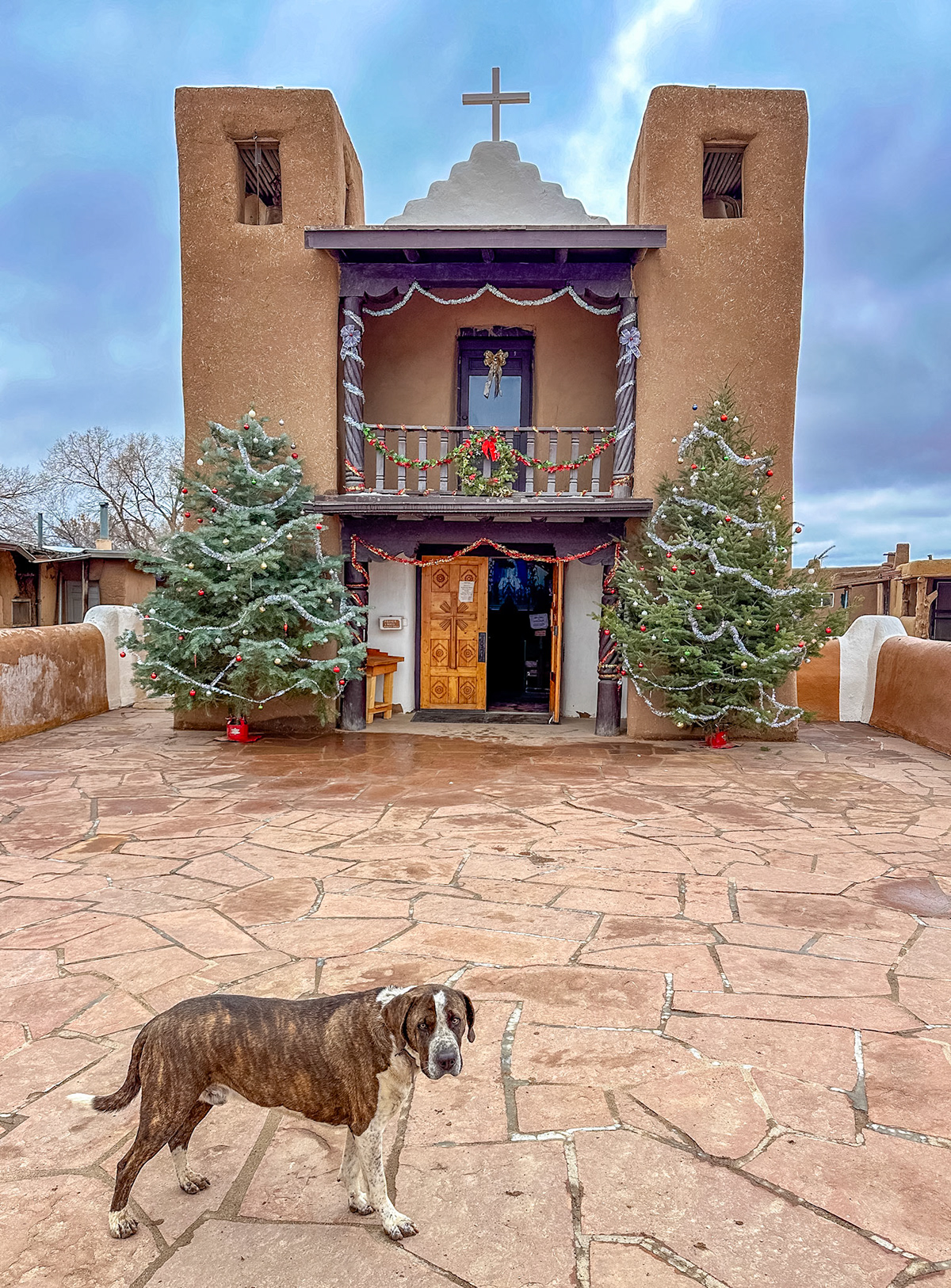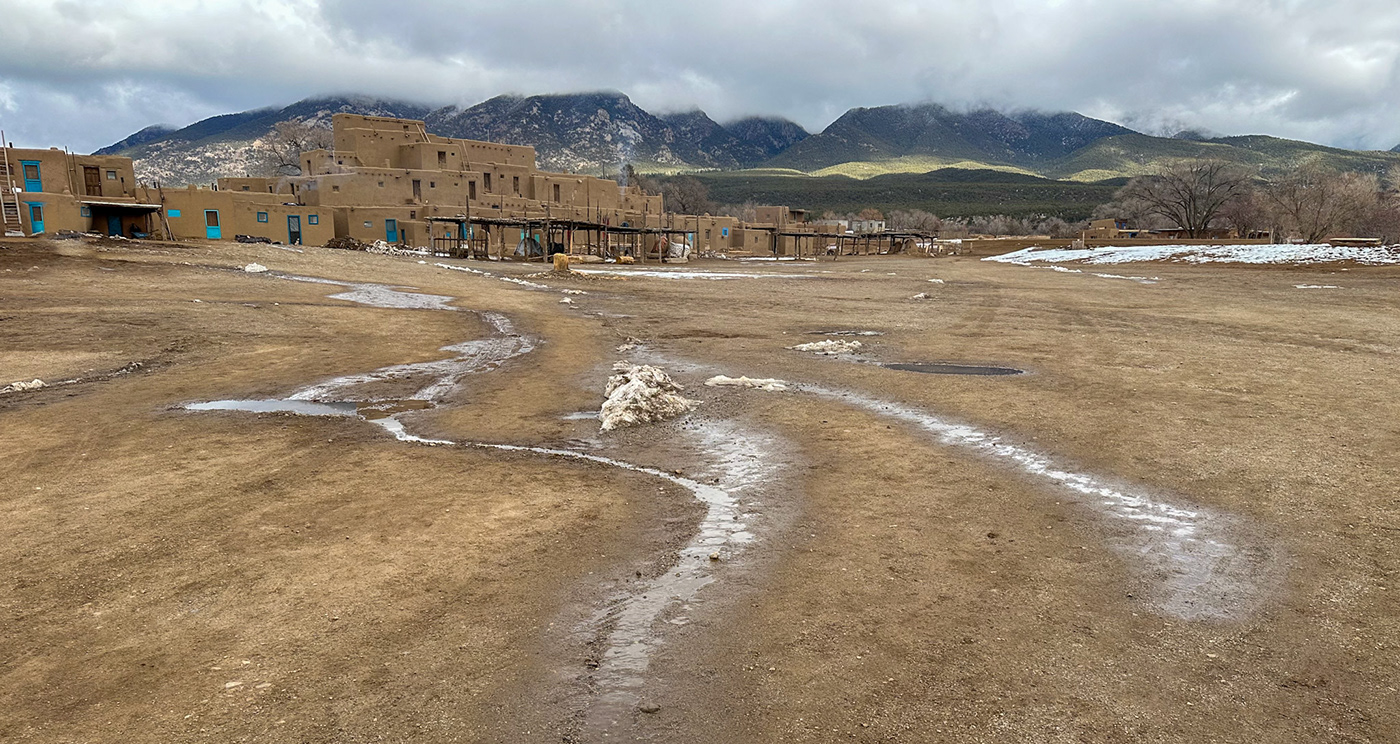Indigenous Tiwa people began constructing their Adobe homes in the Taos Pueblo somewhere between 1000 and 1400AD. Amazingly, some of their direct descendants are still living there today - year round, in spite of no electricity and water! - but most of the 1800 members live nearby and only occupy their Pueblo home during major cultural dances or events. Homes are still mostly passed down to the oldest male offspring, although according to our resident/guide, that is slowly changing.

Text here



The "new" Geronimo Church, above, was built in 1850, but most residents practice both catholicism AND their ancient native religion.
The original church, below, built by forced Pueblo labor in 1619, was first destroyed during the 1680 revolt when 8,000 Pueblo warriors killed 400 Spanish and kicked out 1000 settlers. Spanish successfully re-invaded in 1692, squashed the subsequent Pueblo revolt of 1696, then rebuilt the mission and church in 1706. While there was a reluctant co-existence that lasted until Mexican Independence from Spain in 1821, in 1847 the old church was once again destroyed when the US Army had to put down yet another Taos rebellion during the Mexican-American war. These are the ruins in the photos below.

Interesting note for photo below: the local tradition for the few local Pueblo members that are buried in the original cemetery, is to collect - and pile up - any of the wooden crosses that fall eventually fall down, as they all do.









The adobe walls of each apartment, typically consisting of one room for cooking and eating and a second room for living and sleeping, need their walls refreshed with a coating of sun dried mud mixed with straw - sometimes each and every year! Photos below more clearly show the walls and bricks.




Below. Red Willow Creek gently flows towards the Rio Grande through the site from their sacred source of life, Blue Lake (surprisingly returned to the native people by Pres Nixon). While you and I might get sick drinking from the creek, their bodies have adapted, and it remains the only source of water for the complex (note the person carrying water back to their home).



Of course we had to have some cookies freshly baked in the Horno oven (inherited from the Spanish in the 1500s). Above the oven and scattered throughout the complex are drying racks that, while not used very often today, have been used for centuries for drying meat, veggies and animal hides.



We also found some nice earings - and while I took a photo of the North Korean money owner/artist Sonny Spruce was kindly pointing out to us, I just noticed the check behind it is signed by Georgia O'Keeffe - who apparently shopped there as well!








